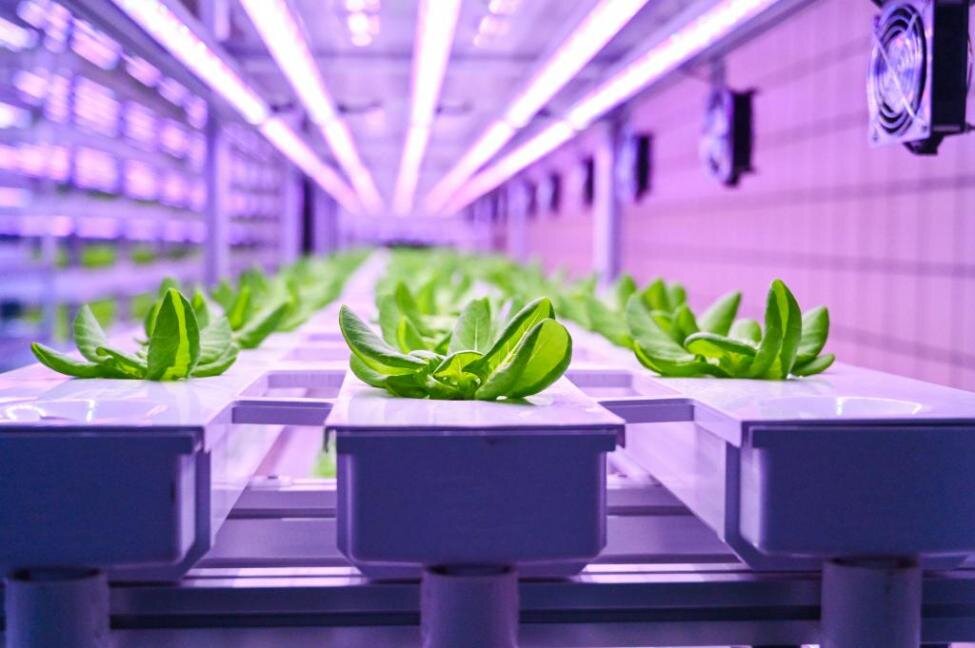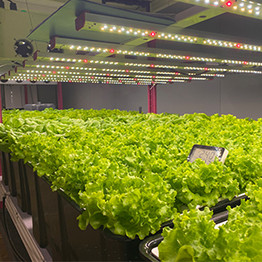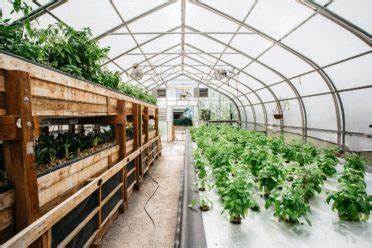
Vertical Farming: Revolutionizing Local Food Movements
Introduction
In recent years, the concept of vertical farming has gained significant attention as a promising solution to meet the growing demand for fresh and sustainable food. This article explores the historical background, key concepts, benefits, case studies, and challenges associated with vertical farms in local food movements. By examining the relevance and importance of vertical farms, we can better understand their impact on food production, environmental sustainability, and the future of agriculture.
Historical Background
Local food movements have evolved over time in response to concerns about food safety, environmental impact, and the desire for fresher and healthier produce. These movements promote the consumption of locally sourced food, supporting small-scale farmers and reducing reliance on long-distance transportation. The emergence of the vertical farming concept can be traced back to the late 20th century when academics and scientists started exploring innovative ways to address the challenges of traditional agriculture.
Key Concepts and Definitions
Vertical farming refers to the practice of cultivating plants in vertically stacked layers or structures, utilizing advanced technologies such as hydroponics, aquaponics, and aeroponics. It involves growing crops in controlled environments, often indoors or in urban areas, using artificial lighting and precise climate control. The primary objectives of local food movements are to strengthen regional food systems, enhance food security, and foster sustainable agricultural practices by promoting the consumption of locally produced food.

Main Discussion Points
Benefits of Vertical Farms in Local Food Movements
Vertical farms offer numerous benefits to local food movements. Firstly, they significantly increase food production capacity by maximizing the use of vertical space and employing efficient cultivation techniques. By utilizing vertical farming methods, growers can produce more crops per square foot compared to traditional farms, thereby improving food availability and reducing dependence on imports.
Secondly, vertical farms contribute to the reduction of food miles and carbon footprint. With produce grown in close proximity to urban centers, the need for long-distance transportation is greatly reduced, leading to decreased greenhouse gas emissions. Additionally, the controlled environments in vertical farms minimize or eliminate the need for chemical pesticides and fertilizers, further reducing the environmental impact.
Lastly, vertical farms enable year-round production and climate control, ensuring a steady supply of fresh produce regardless of seasonal variations or adverse weather conditions. This consistent availability of locally sourced and nutritious food strengthens the resilience of local food systems and supports the health and well-being of communities.
Integration of Vertical Farms into Local Food Systems
To maximize the impact of vertical farms, collaboration with local farmers and suppliers is crucial. By partnering with traditional farmers, vertical farms can complement existing agricultural practices and contribute to the diversification of local food systems. This collaboration can lead to knowledge-sharing, innovation, and the integration of sustainable practices into traditional farming methods.
Furthermore, vertical farms play a vital role in addressing the distribution and access challenges faced by urban areas. By locating vertical farms closer to urban centers, fresh produce can be readily available to consumers, reducing the time between harvest and consumption. This not only ensures the freshness and quality of the produce but also supports the development of healthier and more sustainable food habits.

The economic and social impacts of vertical farms on local communities are also significant. The establishment of vertical farms creates job opportunities, especially in urban areas where employment options may be limited. Additionally, the presence of vertical farms can foster community engagement and education, promoting awareness about sustainable farming practices and local food production.
Environmental Sustainability of Vertical Farms
One of the main advantages of vertical farms is their efficient resource utilization. By employing advanced technologies such as hydroponics, vertical farms use significantly less water compared to traditional agriculture. The closed-loop systems in vertical farms recirculate water, minimizing wastage and reducing the strain on freshwater resources.
Moreover, vertical farms require minimal land area, making them suitable for urban environments where space is limited. The vertical stacking of crops maximizes land use efficiency, allowing for higher crop yields per unit of land. This efficient resource utilization, combined with the reduced need for transportation and elimination of chemical pesticides, contributes to the overall sustainability of vertical farms.
Vertical farms also hold the potential for organic and pesticide-free farming. The controlled environments in vertical farms eliminate the need for chemical treatments, providing an opportunity for organic farming practices. This aligns with the growing consumer demand for healthier and sustainable food options, further supporting the goals of local food movements.
Case Studies or Examples
Several successful case studies demonstrate the effectiveness of vertical farming in local food movements. Gotham Greens, an urban rooftop greenhouse in New York City, utilizes hydroponics to grow a wide variety of leafy greens and herbs. By strategically locating their farms on rooftops, Gotham Greens minimizes the carbon footprint associated with transportation and brings fresh produce directly to urban consumers.
AeroFarms, based in Newark, New Jersey, has developed a vertical farm utilizing aeroponics technology. Their innovative approach allows for the cultivation of crops without soil, reducing the risk of soil degradation and optimizing resource utilization. AeroFarms’ vertical farm has been recognized for its high yields, consistent quality, and year-round production.
Another noteworthy example is Plantagon, a vertical farm in Linköping, Sweden. Plantagon utilizes a unique three-dimensional cultivation system, combining hydroponics and automated robotic technology. This vertical farm showcases the potential for sustainable and efficient food production in urban areas, contributing to the local food movement in Sweden.
Current Trends or Developments
Technological advancements continue to shape the landscape of vertical farming systems. Innovations in LED lighting, sensors, and automation have improved energy efficiency and crop yields, making vertical farms more economically viable. The integration of artificial intelligence and data analytics has also enhanced the monitoring and control of vertical farming environments, optimizing resource utilization and improving crop quality.
The expansion of vertical farms is not limited to specific regions. Globally, more countries are recognizing the potential of vertical farming and are investing in the establishment of vertical farm facilities. This expansion contributes to local food movements by increasing food production capacities, reducing reliance on imports, and improving food security.

Research findings on the nutritional value and quality of vertical farm produce are continually emerging. Studies have shown that vertical farming methods can produce crops with higher nutrient content and reduced pesticide residues compared to conventionally grown produce. These findings support the perception that vertical farm produce is not only sustainable but also nutritionally superior.
Challenges or Controversies
High initial investment and operational costs pose significant challenges to the widespread adoption of vertical farms. The advanced technologies, infrastructure, and resource-intensive nature of vertical farming require substantial financial investments. However, as the industry continues to grow and evolve, economies of scale and technological advancements may help reduce these costs over time.
Consumer acceptance and perception of vertical farm produce also present challenges. Some consumers may have reservations or skepticism regarding the quality, taste, and safety of vertically grown crops. Addressing these concerns through education, transparency, and quality assurance programs is essential for increasing consumer trust and acceptance.
The impact of vertical farms on traditional farming practices and rural communities is another area of controversy. While vertical farms offer benefits such as increased food production and job opportunities, they may also result in the displacement of traditional farmers or changes in traditional farming practices. Striking a balance between modern agricultural techniques and traditional farming methods is crucial for maintaining the social fabric of rural communities.
Future Outlook
Vertical farms have the potential for scalability and widespread adoption. As technological advancements continue to drive down costs and improve efficiency, the establishment of more vertical farms can become economically viable. This scalability can contribute to meeting the increasing global demand for fresh and sustainable food.
The integration of vertical farms with smart cities and urban planning holds great promise. By aligning vertical farm locations with urban development plans, cities can ensure a sustainable and localized food supply. This integration can also lead to the development of smart food systems that incorporate efficient distribution networks and responsive farming practices.
Vertical farms play a vital role in addressing food security and sustainable development. By reducing dependence on long-distance transportation, preserving natural resources, and providing access to fresh produce, vertical farms contribute to a more resilient and sustainable food system.
Conclusion
Vertical farms have emerged as a viable and sustainable solution within local food movements. The benefits they offer, such as increased food production capacity, reduced carbon footprint, and year-round production, make them valuable contributors to sustainable agriculture. By integrating vertical farms into local food systems, collaborating with traditional farmers, and addressing the challenges and controversies associated with the concept, vertical farms can pave the way for a more resilient, accessible, and sustainable food future.
References
Smith, E. R. (2020). Vertical Farming: Feeding the Future. Cambridge Scholars Publishing.
Despommier, D. (2011). The Vertical Farm: Feeding the World in the 21st Century. Picador.
Gotham Greens. (n.d.). Retrieved from https://www.gothamgreens.com/
AeroFarms. (n.d.). Retrieved from https://aerofarms.com/
Plantagon. (n.d.). Retrieved from https://www.plantagon.com/




